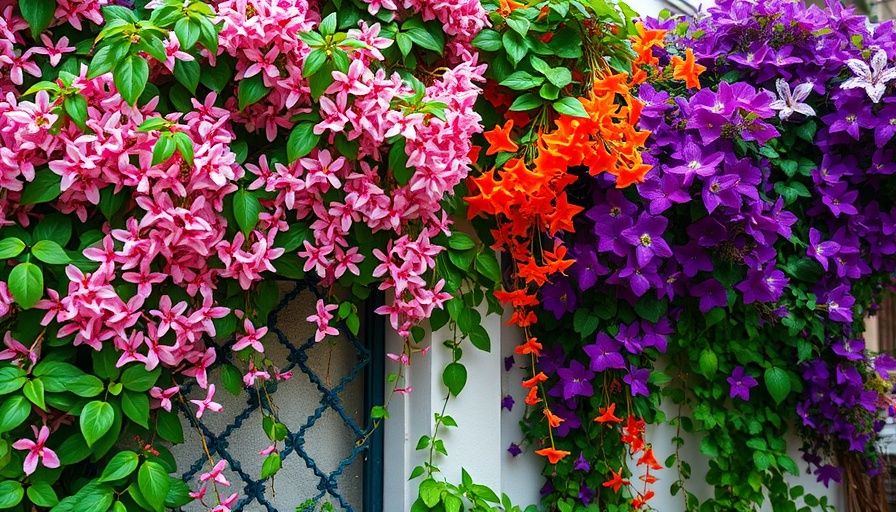
The Rise of Climbing Vines: Elevate Your Balcony Bliss
As urban living in Metro Vancouver continues to grow, many residents are seeking creative solutions to maximize their balcony space. This growing interest in gardening on vertical surfaces has turned the spotlight on climbing perennial vines. However, not all climbing vines are created equally—they can bring both beauty and challenges to your green oasis. So, before you decide which vine to plant, let’s explore the beauty and potential pitfalls of these garden climbers, inspired by the recent video, 19 Best Climbing Perennial Vines.
In 19 Best Climbing Perennial Vines, the video highlights various climbing plants that can enhance your garden aesthetics, sparking our exploration of how they can be utilized effectively on balconies.
Show-Stopping Options for Your Balcony
Among the top contenders is the majestic clematis. Often hailed as the royalty of climbing plants, clematis offers vibrant blooms and can thrive with proper placement in full sun and care that keeps its roots cool. To ensure a show-stopping display, consider pairing it with mulch to retain moisture or planting lower-growing companions for added visual interest.
Another striking option is climbing hydrangea. Although it’s a slow starter initially, patience pays off as it boasts large white blooms that add winter charm and delight even in shaded areas. Just be sure that your balcony structure can support its growth, as it can reach up to 50 feet tall!
Be Cautious of Invasive Vines
The chocolate vine may sound sweet, but don’t be deceived. This vine grows rapidly and is considered invasive in many regions. It’s advisable to monitor its growth closely if you decide to add it to your balcony garden. Similarly, the trumpet vine, adored by hummingbirds, can take over if not pruned regularly. While both can add beauty to your space, they require responsible management to prevent them from becoming problematic.
Fostering Pollinator-Friendly Spaces
Creating a haven for pollinators is not only beneficial for your garden, but it helps the local ecosystem as well. Vines like cape honeysuckle and purple passion flower thrive in urban environments and attract various pollinators with their vivid blooms. The cape honeysuckle can even be trained as a shrub or a vine, giving you flexibility in designing your balcony space.
Unique Choices for the Creative Gardener
If you want to stand out, consider planting a snapdragon vine or a snail vine. The delicate purple and white flowers of the snapdragon vine attract hummingbirds, making it not only visually stunning but also very rewarding to grow. Meanwhile, the charming twisting petals of the snail vine require some grooming but reward those who nurture them with delightful scents and captivating looks.
Choosing the Right Vines for Your Urban Oasis
Choosing the right climbing vine is more than simply picking one with the prettiest flowers; it involves understanding the specific needs of your balcony space and how each vine might impact your garden's environment. As Metro Vancouver residents, we can enjoy an abundance of plant options to create a stunning vertical space.
From the vibrant blooms of clematis to the charming fragrance of moonflower, these climbing vines can transform your balcony into a thriving garden haven. Consider how each plant will adapt to your specific conditions before you commit. Beautiful spaces are crafted with thoughtful planning, and climbing plants can offer an exceptional way to maximize your urban gardening experience.
Ready to Start Your Climbing Garden?
If you found this guide helpful and are excited to transform your balcony into a vibrant green space with climbing perennial vines, start researching and choose the perfect plant for your unique situation today!
 Add Row
Add Row  Add
Add 




Write A Comment